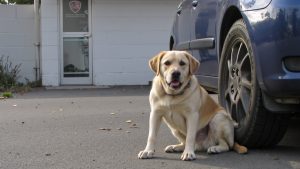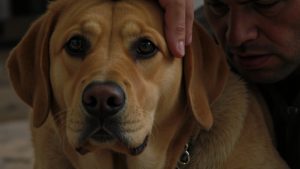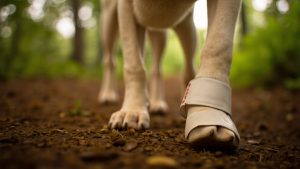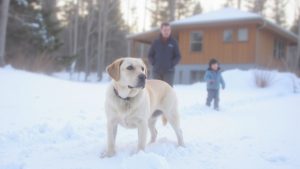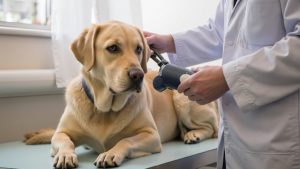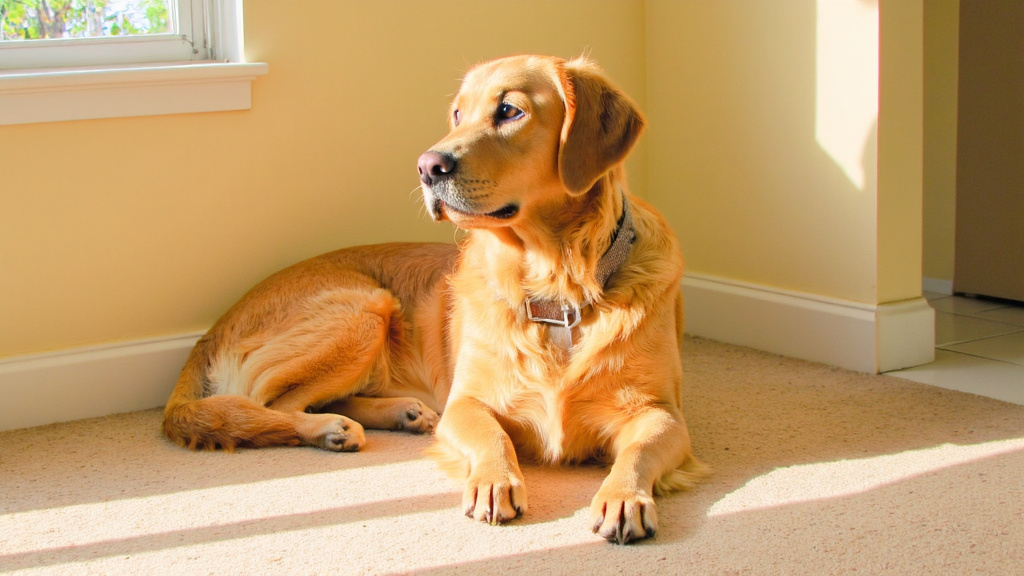
Supporting aging dogs rests on three key pillars: physical health, environmental comfort, and mental engagement. As dogs grow older, their needs evolve—and so should our care for them. From joint-friendly exercise routines to home adjustments and mental enrichment, small changes can have a big impact. In the sections ahead, we’ll break down each of these pillars and explore practical ways to help your senior dog stay comfortable, active, and mentally sharp.
How to Support Your Senior Dog’s Physical Health with Exercise and Home Modifications
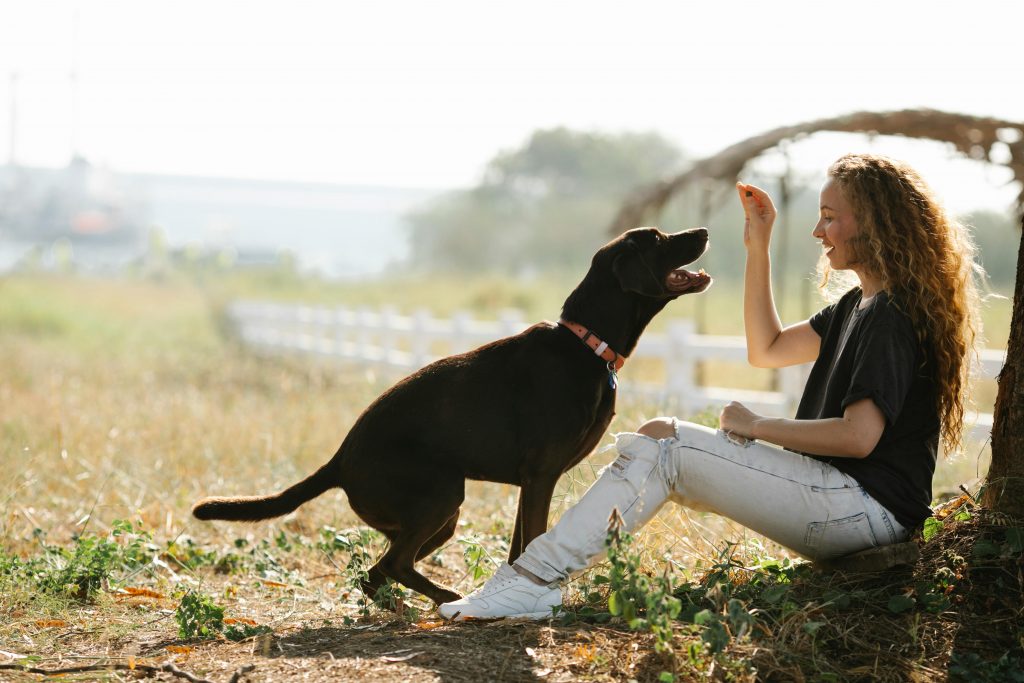
As dogs enter their golden years, their physical needs change significantly. That energetic pup who once bounded through the park for hours now moves more deliberately, perhaps with a touch of stiffness in the morning. Supporting an aging dog requires thoughtful adjustments to both their exercise routine and living environment.
Simple modifications can dramatically improve a senior dog’s quality of life and help maintain their mobility longer. Explore practical ways to keep an aging dog comfortable, active, and happy.
Adapting Exercise for Aging Bodies
Exercise remains crucial for senior dogs, but the intensity and duration need adjustment. Rather than eliminating activity, focus on gentler options that maintain muscle tone without stressing arthritic joints. Many veterinarians recommend consistent, moderate movement to prevent mobility loss in older dogs.
Short, frequent walks often work better than marathon sessions. A 15-minute stroll twice daily typically benefits seniors more than a single hour-long trek. Watch the dog’s signals – if they start lagging or panting heavily, it’s time to head home. Swimming provides excellent low-impact exercise for dogs with joint problems, as water supports their weight while allowing natural movement patterns.
Home Modifications That Make a Difference
The home environment can either help or hinder a senior dog’s comfort and independence. Strategic modifications can prevent injuries and make daily activities less painful.
Start with flooring. Slippery surfaces become treacherous for older dogs with declining mobility. Adding carpet runners or non-slip rugs on hardwood or tile creates secure pathways through a home. This simple change prevents falls and builds confidence in dogs who might otherwise become hesitant to move around.
Consider the dog’s sleeping arrangements. Orthopedic bedding with memory foam provides crucial joint support and pressure relief. These specialized beds distribute weight evenly, reducing pain points and promoting better sleep. Position beds in draft-free areas, as senior dogs often become more sensitive to temperature fluctuations.
For dogs who enjoy furniture time, ramps or stairs offer safer access than jumping. A gradual-incline ramp with a non-slip surface works perfectly for beds and couches. This modification prevents the joint trauma that comes from jumping down, which can be particularly damaging for seniors.
Elevated food and water bowls represent another small change with significant benefits. Raising dishes to shoulder height allows dogs to eat and drink without straining their neck. This position aids digestion and can actually improve appetite in some seniors who had begun showing less interest in meals.
Mental Stimulation Matters Too
Physical care should pair with cognitive engagement. Mental stimulation prevents cognitive decline and keeps a senior dog’s mind sharp. Puzzle toys that dispense treats encourage problem-solving while accommodating limited mobility. Food puzzles can turn mealtime into an engaging activity that provides both nourishment and mental exercise.
Training sessions don’t need to end with age. Short, positive sessions teaching new tricks or reinforcing commands stimulate a dog’s brain while strengthening the bond with their owner. These activities can be adapted to accommodate physical limitations while still providing satisfying mental challenges.
Creating Consistency and Comfort
Predictable routines become increasingly important for senior dogs. Regular mealtimes, consistent walking schedules, and familiar paths help aging dogs who may experience some cognitive changes. When making necessary modifications to a home, introduce them gradually to avoid confusion.
Temperature regulation deserves special attention. Older dogs often struggle with temperature extremes, so provide warm bedding in winter and cooling options during summer months. Consider a self-cooling mat for hot days if a senior dog pants excessively.
The investment in proper support equipment pays dividends in a dog’s comfort and longevity. Harnesses with handles allow assistance with stairs or getting into vehicles. For dogs with more significant mobility challenges, rear-support slings help with balance during walks and bathroom breaks.
Supporting a senior dog’s physical health doesn’t require a complete home renovation or expensive equipment. Small, thoughtful adjustments to their exercise routine and living space can dramatically improve their comfort, mobility, and quality of life. The key is recognizing their changing needs and responding with compassion and creativity.
What Changes Should You Expect as Your Dog Becomes a Senior?

Most dogs transition into their senior years around ages 7-10, though this timeline varies based on breed and size. Small breeds often don’t show signs of aging until 10-12 years, while giant breeds may develop senior health issues as early as 5-7 years old. This means a Great Dane might be considered elderly at 7, while a Chihuahua could still display youthful energy at the same age.
As a dog enters their golden years, there are both physical and behavioral changes that signal this natural transition. The most visible physical change is often the appearance of gray or white hair, particularly around the muzzle, face, and paws. This distinctive “sugar face” gives many senior dogs a distinguished appearance.
Physical Changes
Beyond the cosmetic changes, senior dogs typically experience several physical transitions:
- Reduced mobility and stiffness, especially after resting
- Decreased energy levels and endurance during walks or play
- Changes in weight and muscle mass (either gaining weight due to decreased activity or losing muscle mass)
- Vision changes, including cloudy eyes or difficulty seeing in dim light
- Hearing loss, which may cause the dog to startle easily or seem to ignore commands
- Changes in sleep patterns, often sleeping more deeply or for longer periods
- Dental issues that might affect eating habits or cause bad breath
These physical changes naturally influence a dog’s behavior and routine. A dog who once eagerly bounded up the stairs might now take them slowly or avoid them altogether. A previously keen-eyed dog might bump into furniture if it is rearranged, signaling vision loss that requires special accommodations.
Behavioral Changes
The behavioral shifts in senior dogs often reflect their physical condition and changing needs:
- Less interest in vigorous exercise, preferring shorter, gentler walks
- Increased need for comfortable resting spaces
- Possible house-training regression or incontinence issues
- Changes in social behavior, either becoming more clingy or more independent
- Increased sensitivity to environmental changes or disruptions to routine
- Possible confusion or disorientation in familiar settings
- Changes in appetite or eating habits
Many senior dogs also develop increased anxiety, which might manifest as reluctance to be left alone or heightened reactivity to sounds. This isn’t just stubbornness – it often reflects a decreased ability to cope with stressors as they age.
While aging brings challenges, it’s important to distinguish between normal aging and medical problems. Senior dogs are more susceptible to conditions like arthritis, dental disease, heart problems, and cognitive dysfunction. However, remember that “old age isn’t a disease” – many senior dog issues can be managed with proper veterinary care.
Despite these changes, many senior dogs maintain their joy for life and deep bonds with their families. Their personalities often remain intact, though perhaps softened by age. That playful spirit might still emerge, just in shorter bursts followed by longer naps. With thoughtful mental stimulation for aging dogs and appropriate home modifications like non-slip flooring or ramps, a senior dog can navigate this stage of life with dignity and comfort.
Understanding these natural transitions helps in adapting expectations and care routines to match a dog’s changing needs, ensuring their senior years remain comfortable and fulfilling.
How Can You Keep Your Dog Engaged With Mental Stimulation For Aging Dogs?
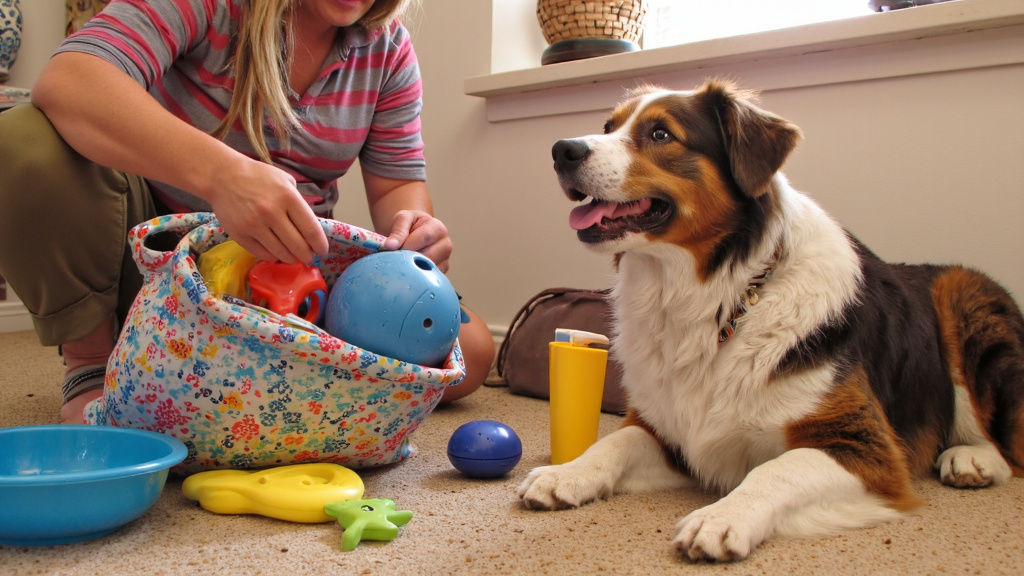
Just like humans, dogs experience cognitive changes as they age. Their brains need regular workouts to stay sharp and healthy. Mental stimulation for aging dogs is essential for maintaining their quality of life and slowing cognitive decline. Though senior dogs may not run agility courses, their curiosity and desire to interact with their environment remains strong.
Many people think that when a dog becomes older, they’ll no longer want to play or might not have the energy. This couldn’t be further from the truth. Their relationship with their owner becomes even more important to them, and time spent interacting through age-appropriate play becomes vital for keeping them healthy and happy.
Senior-Friendly Enrichment Activities
As a dog ages, their mental exercise routines need adjustment. Here are effective ways to provide cognitive stimulation:
- Sensory-Rich Walks: Take short, varied routes that allow plenty of time for sniffing. These “sniffaris” decrease the dog’s heart rate and release dopamine, creating a calming effect while exercising their powerful sense of smell. Even senior dogs with reduced mobility can enjoy these slower-paced adventures.
- Puzzle Feeders and Toys: Food-dispensing toys like Kong Classics filled with soft treats or Nina Ottosson puzzle games are perfect for older dogs. These puzzles encourage problem-solving without excessive physical effort. For dogs with sensitive teeth, look for senior-specific options with softer materials.
- Gentle Training Sessions: Short 5-15 minute training periods can mentally exhaust a dog in a positive way. Review old commands or teach simple new tricks that don’t require jumping or strenuous movement. This reinforces the bond while keeping their mind active.
- Nose Work Games: Hide treats around the house at a dog’s level or create a simple scent-tracking game. Scent work is particularly valuable for seniors as smell is often the last sense to diminish with age.
Adapting to Changing Abilities
When planning mental stimulation for an aging dog, consider specific limitations:
For dogs with declining vision, select toys with strong scents or consistent textures they can identify through smell or touch. If hearing is diminishing, focus on visual cues and scent-based activities instead of sound-activated toys. For dogs with joint issues, provide mental challenges that can be enjoyed while lying down, such as lick mats or stuffed toys.
One effective strategy is rotating toys weekly. This simple trick keeps the dog’s toys exciting and helps prevent boredom. Each week feels like they’re getting the toys for the first time.
Building Cognitive Resilience
Regular mental stimulation can significantly benefit older dogs experiencing cognitive decline. Interactive toys and puzzles encourage problem-solving, potentially enhancing cognitive functions and slowing the progression of symptoms. These activities can also improve mood, reduce anxiety, and foster a sense of routine that offers comfort and security to aging dogs.
Even simple everyday activities can provide valuable mental exercise. Car rides offer new smells and sights from the safety of a familiar environment. Scatter feeding (hiding small portions of kibble around a room) encourages natural foraging behaviors. Even watching squirrels through a window can engage a senior dog’s mind.
Remember that socialization remains important for aging dogs. Arrange calm meetups with other gentle dogs, or simply take a dog to a quiet park bench to observe the world. These experiences help maintain their connection to their environment while respecting their energy levels.
Most importantly, be patient and observant. Watch for signs of fatigue or discomfort, and adjust activities accordingly. With thoughtful adaptations, you can help a senior dog continue to engage with the world around them, supporting their cognitive health throughout their golden years.
What Health Checks and Grooming Routines Should You Prioritize for Senior Dogs?

As dogs enter their golden years, their healthcare needs evolve significantly. The diligent care provided now directly impacts their comfort and longevity. Veterinarians recommend scheduling check-ups twice yearly for senior dogs, rather than the annual visits sufficient for younger dogs.
Essential Health Monitoring
These bi-annual veterinary visits serve as crucial prevention tools. Vets conduct thorough examinations focusing on early detection of common senior dog conditions. Blood work to assess organ function becomes increasingly important as kidney and liver issues often develop silently in aging dogs.
Joint monitoring takes center stage during these visits. Veterinarians check for signs of osteoarthritis, which affects approximately 80% of dogs over age eight. They evaluate mobility, comfort levels, and may recommend appropriate supplements or medications to manage discomfort before it severely impacts quality of life.
Dental examinations are non-negotiable for senior dogs. Periodontal disease not only causes pain but can lead to systemic health problems when bacteria enter the bloodstream. The oral health-body health connection is particularly significant in older dogs with potentially compromised immune systems.
Home Health Checks
Between veterinary visits, conduct weekly health scans. Run hands gently over the dog’s entire body, feeling for any new lumps, bumps, or tender areas. Note changes in weight, appetite, water consumption, or bathroom habits. These simple observations often reveal developing issues before they become serious problems.
Mental stimulation for aging dogs provides more than entertainment—it offers valuable health insights. A senior dog suddenly uninterested in puzzle toys or training sessions might be experiencing pain or cognitive decline worth discussing with a veterinarian.
Senior-Specific Grooming Needs
Grooming transcends aesthetics for senior dogs, becoming a critical health maintenance routine. Regular brushing prevents painful mats that can hide skin infections or tumors. For long-haired breeds, consider more frequent professional grooming to maintain manageable coat length and reduce grooming-related stress.
Nail care requires special attention as overgrown nails force unnatural foot positioning, exacerbating joint pain and potentially accelerating arthritis. If the dog resists nail trims, consult a veterinarian about anxiety-reducing options or consider professional grooming services.
Bathing routines should adapt to the senior dog’s needs. Use warm (not hot) water and non-slip mats to prevent falls. Quick, gentle baths with senior-specific shampoos help maintain skin health without overtaxing their endurance. Some home modifications for older dogs, like raised bathing stations, can make grooming more comfortable for both the pet and owner.
Exercise for senior dogs complements grooming by supporting joint health and circulation. After brushing sessions, gentle walking helps distribute natural oils through the coat while providing mild exercise beneficial for aging joints.
Quick Senior Dog Grooming Checklist
- Brush coat 2–3 times weekly (daily for long-haired breeds)
- Check and clean ears weekly
- Trim nails every 3-4 weeks
- Bathe using warm water and gentle shampoo monthly
- Clean facial folds daily for breeds with wrinkles
- Brush teeth daily or use dental wipes if brushing isn’t tolerated
- Wipe eyes with species-appropriate cleaner as needed
Remember that grooming sessions provide perfect opportunities to check for abnormalities. If anything unusual is noticed—skin discoloration, unusual odors, discharge, or changes in coat texture—consult a veterinarian promptly. These observations, combined with regular professional care, form the foundation of effective senior dog health management.
Senior Dog Care: Cherishing Every Golden Moment
Caring for a senior dog is a journey rich with meaningful rewards. By tuning into their evolving needs—gentler exercise, cozy home modifications, ongoing mental stimulation—you create opportunities for comfort and joy.
Guiding a dog through these golden years, solutions like the Halo Collar and other pet-safety options provide added peace of mind, allowing confidence to safely explore routes or spend time outdoors within secure boundaries, even as needs change. Sustained attention to preventive health, supportive environments, and a deepened bond will ensure a dog remains happy and engaged well into senior years.
For expert guidance on supporting dog health at every stage, visit the Dog Health page.

